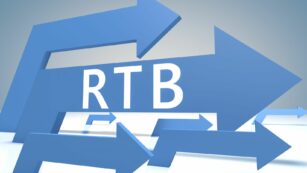In the fast-paced world of digital advertising, header bidding has emerged as a game-changer, revolutionizing how ad space is sold. This technology allows publishers to maximize their revenue by enabling multiple ad exchanges to bid on the same inventory simultaneously. Before diving deeper, it’s essential to grasp what header bidding really means and why it’s become a critical strategy for web publishers.
Header Bidding Definition
 Header bidding, a complex yet innovative approach to online advertising, revolutionizes how ads are served. This technique ensures publishers maximize their revenue through real-time bidding from multiple advertisers.
Header bidding, a complex yet innovative approach to online advertising, revolutionizes how ads are served. This technique ensures publishers maximize their revenue through real-time bidding from multiple advertisers.
Header bidding is an advanced programmatic advertising technique that allows publishers to offer their ad inventory to several ad exchanges simultaneously before making calls to their ad servers. This ensures multiple demand sources bid on the same inventory at the same time, which increases competition and potentially drives up advertiser bids. Essentially, it allows advertisers to compete for premium ad space that they might not otherwise have access to, leading to more lucrative bidding for publishers.
Key Components of Header Bidding
How Header Bidding Works
Header bidding functions as a sophisticated programmatic advertising technique where publishers offer ad spaces to multiple ad exchanges simultaneously before calling their ad servers. The process starts when a user visits a website; the header bidding code on the website sends out bid requests to various ad exchanges. These exchanges then return with their bid prices in real-time. The highest bid selected notifies the publisher’s ad server, which then displays the winning advertiser’s ad to the user. This method ensures that publishers get the best possible price for their ad space by maximizing competition among advertisers.
The Role of the Ad Server and Demand Partners
 The ad server plays a pivotal role in the header bidding framework; it acts as the decision-maker once all bids are submitted. After receiving the highest bid from the header bidding process, the ad server compares this bid against other direct deals or reserved campaigns already in place. If the header bid surpasses these, it will display the bidder’s ad. Otherwise, it opts for a more profitable or prioritized offer.
The ad server plays a pivotal role in the header bidding framework; it acts as the decision-maker once all bids are submitted. After receiving the highest bid from the header bidding process, the ad server compares this bid against other direct deals or reserved campaigns already in place. If the header bid surpasses these, it will display the bidder’s ad. Otherwise, it opts for a more profitable or prioritized offer.
Demand partners, including ad exchanges and networks, are critical in header bidding. They respond to bid requests sent by the publisher with their best offers. Each demand partner evaluates the available ad inventory based on multiple factors such as user demographics, site content, and historical performance data.
Benefits of Header Bidding
Increased Revenue for Publishers
Publishers benefit significantly from header bidding, primarily through increased revenue streams. By allowing multiple demand partners to compete for the same ad space, header bidding drives up the bids. In practice, this setup ensures that publishers receive the highest possible rates for their ad placements. Studies indicate an average revenue uplift of 20-40% for publishers using header bidding. This increase is due to the exposure of inventory to a broader range.Results in this strong competition lead directly to higher bids and, thereby, more substantial publisher earnings.
Improved Ad Inventory Utilization
Header bidding also optimizes the utilization of ad inventory. Traditionally, some ad spaces remained unsold or sold at lower prices due to lack of exposure to multiple advertisers.
Challenges and Considerations
Technical Complexity and Increased Latency
 Implementing header bidding involves complex and sophisticated technology. Publishers must integrate multiple technology partners and manage significant increases in system requests and data processing. If not handled properly, this could lead to slower page load times, negatively impacting user experience. Additionally, publishers need robust technical support to troubleshoot any issues that may arise, ensuring seamless ad operation.
Implementing header bidding involves complex and sophisticated technology. Publishers must integrate multiple technology partners and manage significant increases in system requests and data processing. If not handled properly, this could lead to slower page load times, negatively impacting user experience. Additionally, publishers need robust technical support to troubleshoot any issues that may arise, ensuring seamless ad operation.
Header bidding may increase page load times due to the multitude of simultaneous bid requests sent to different demand partners. Increased latency, if not managed, detracts from the user experience, potentially decreasing page views and adversely affecting ad revenue. Optimizing the header bidding setup, such as implementing timeout settings, can help reduce latency and maintain a smooth user experience.
Infrastructure Costs
Setting up and maintaining a header bidding system entails additional infrastructure costs. Publishers need advanced server capabilities to handle increased data traffic and ensure responsive bid processing. They must balance these costs against the potential revenue gains from implementing header bidding to determine its overall cost-effectiveness.



